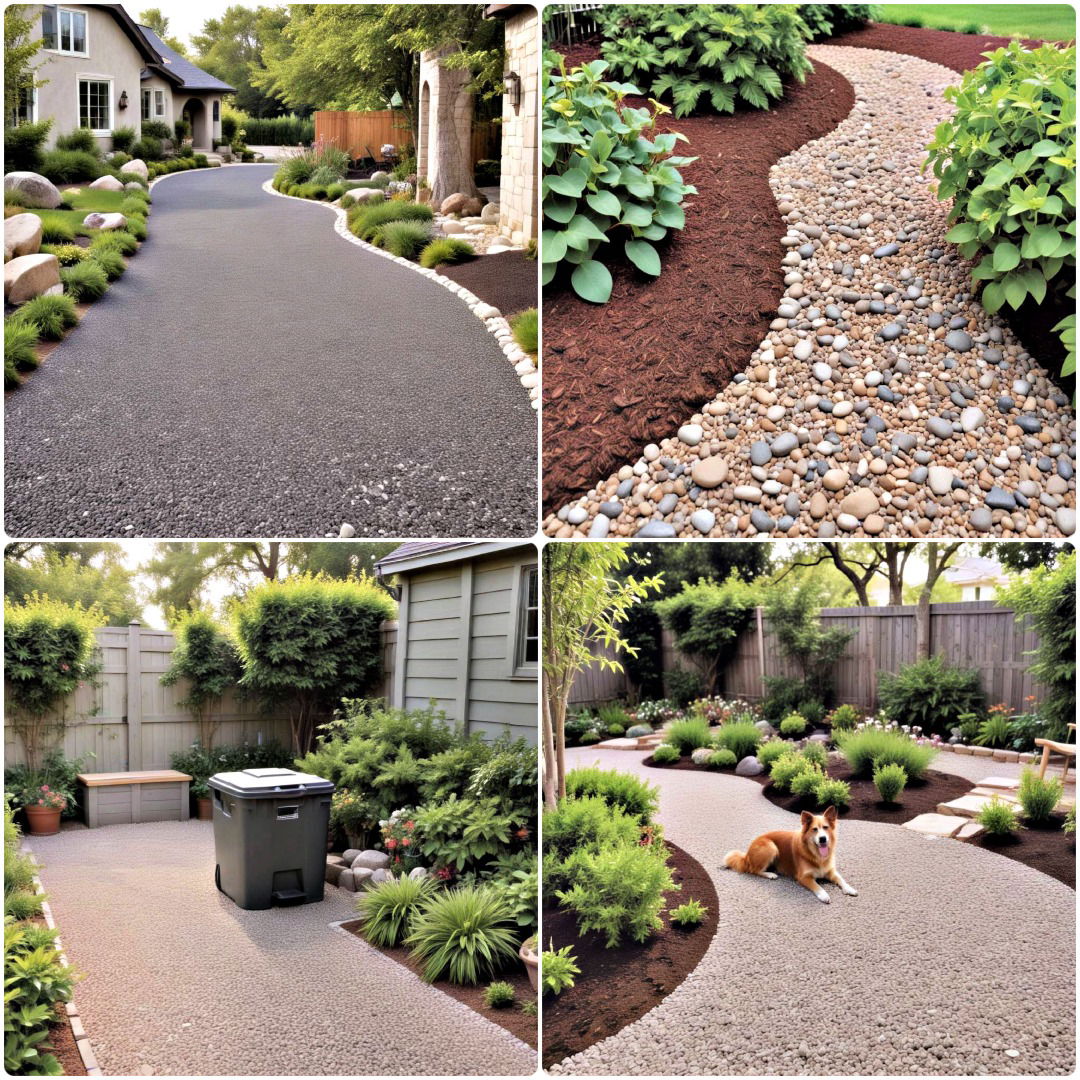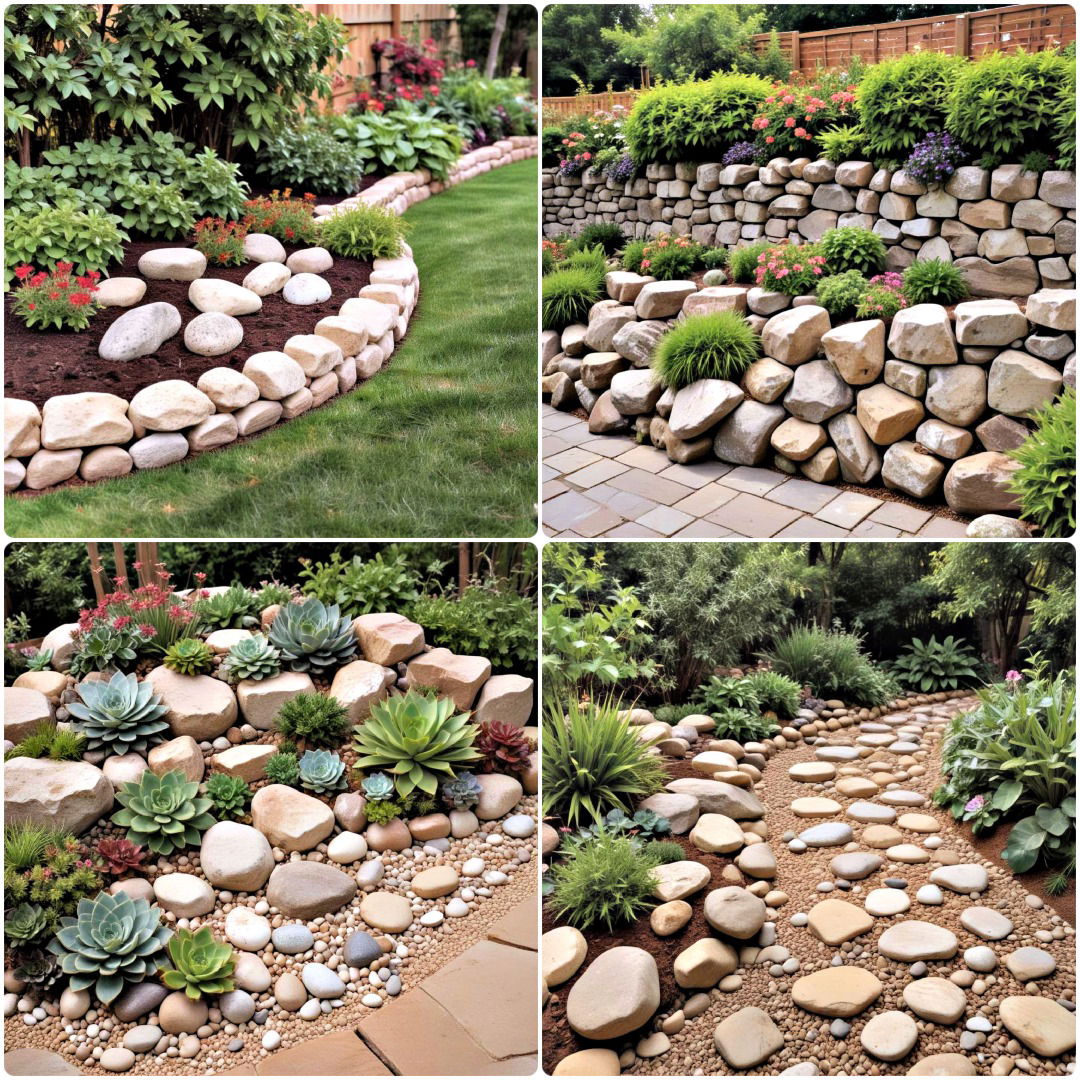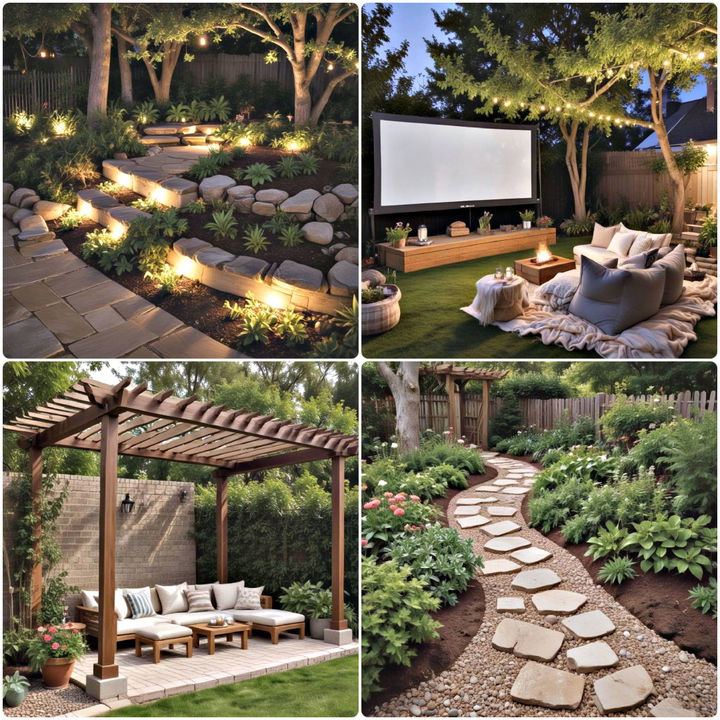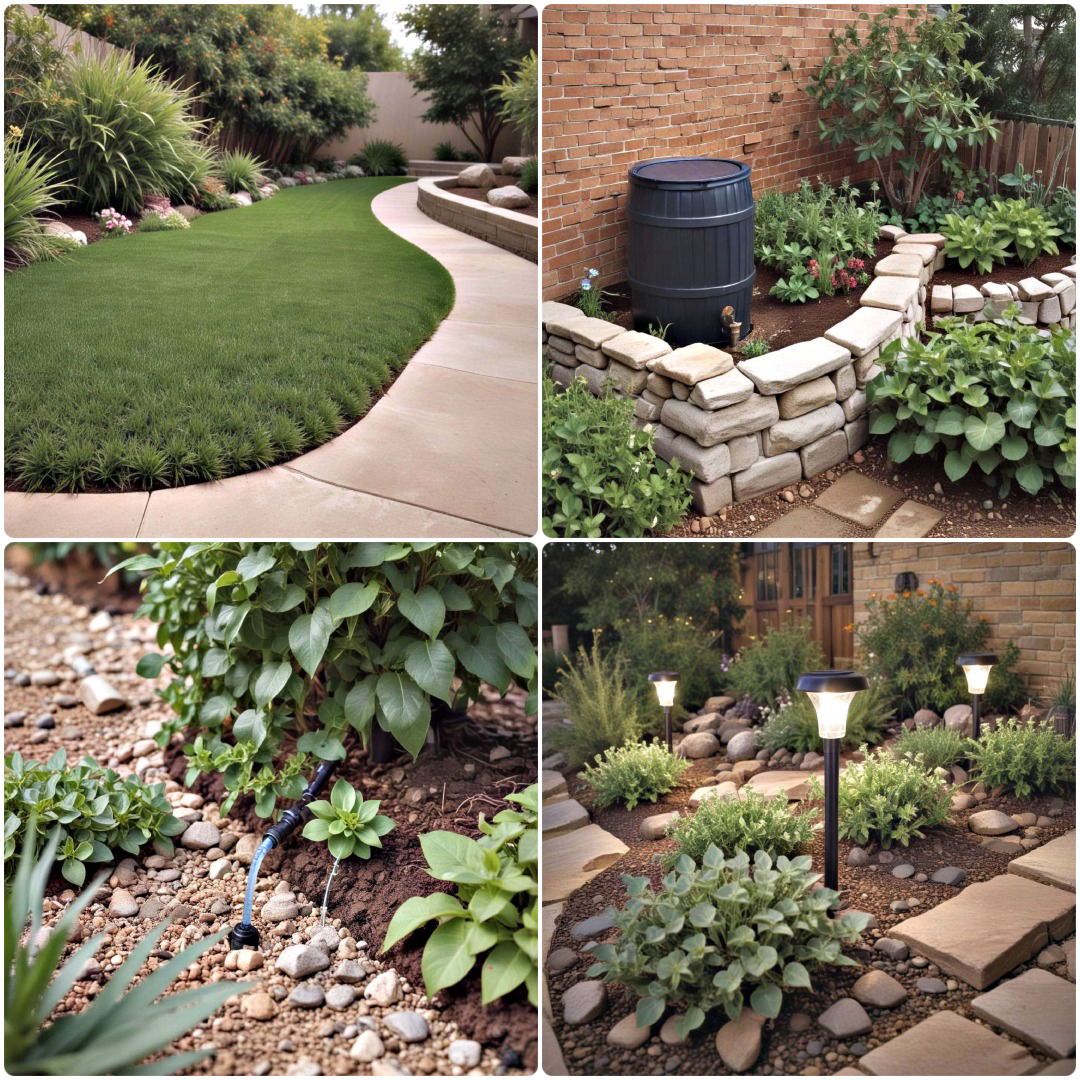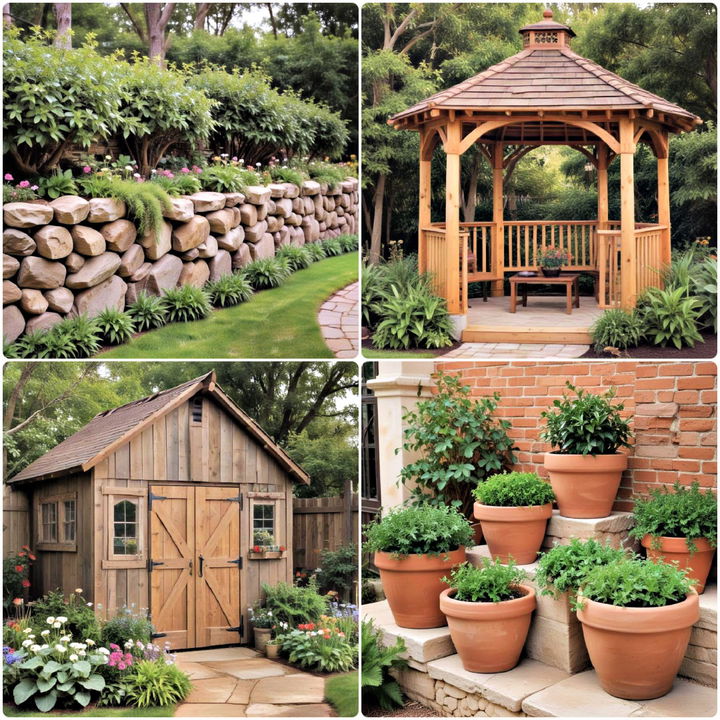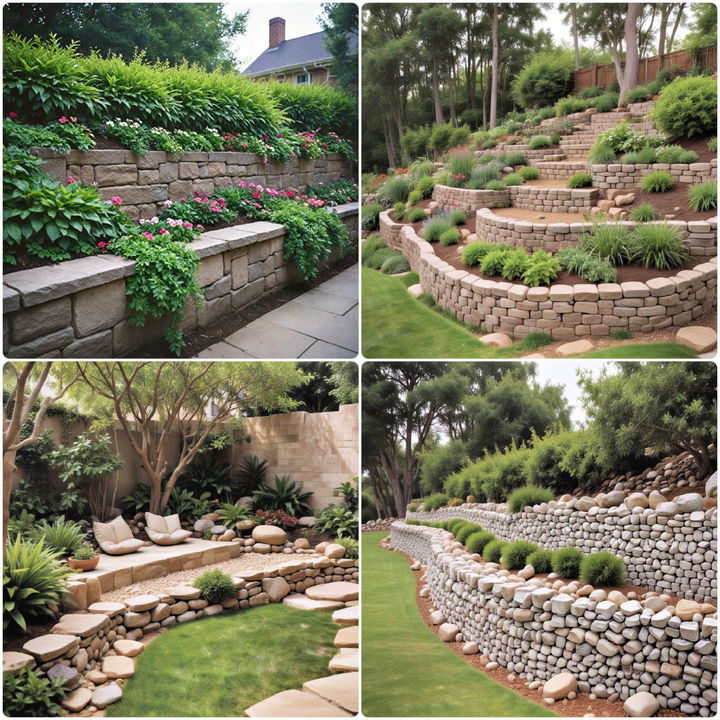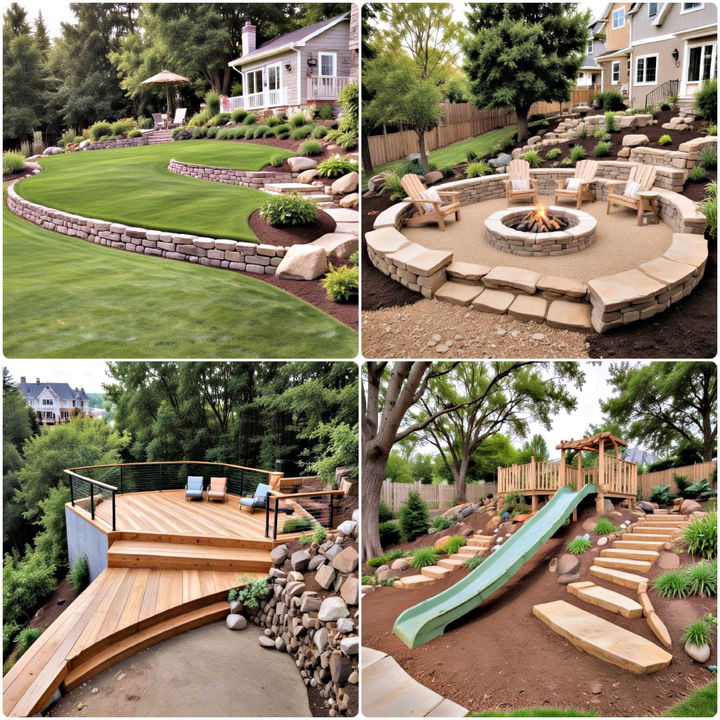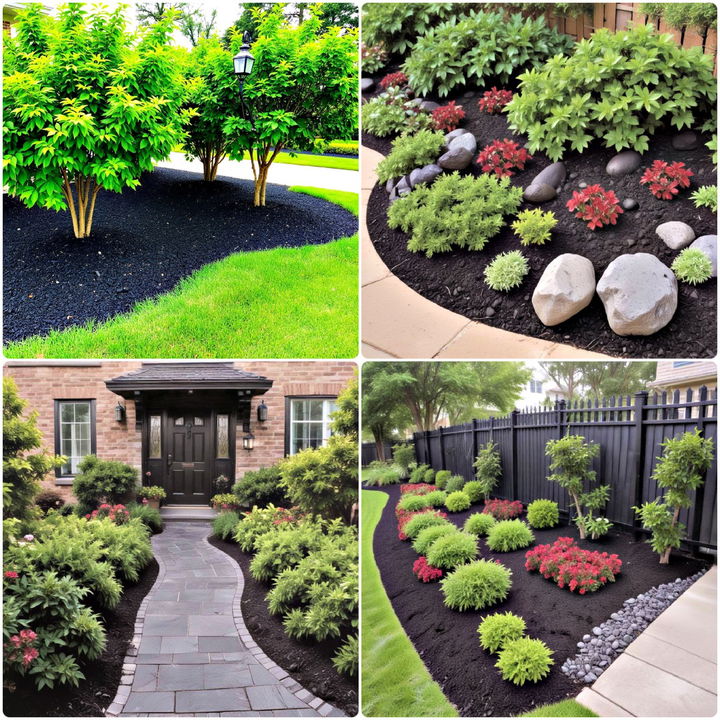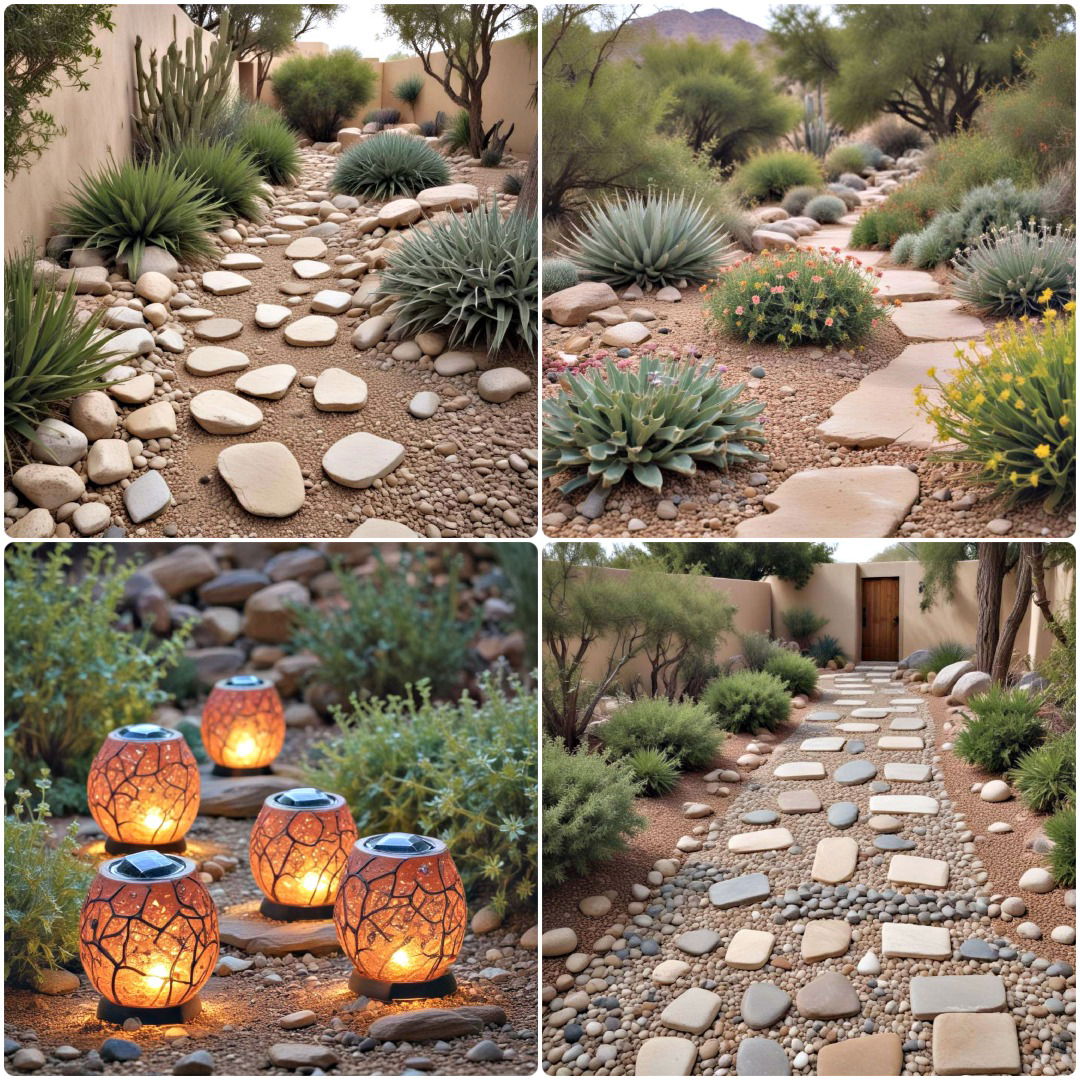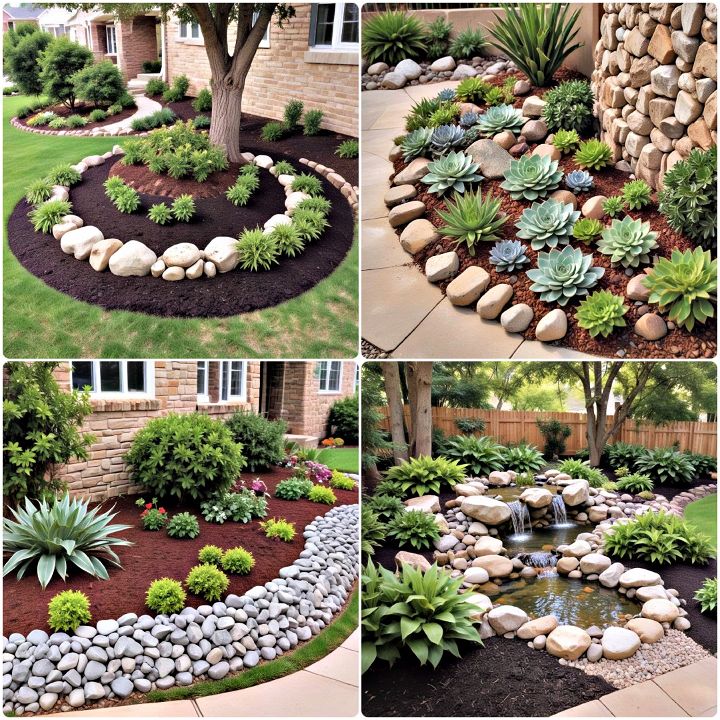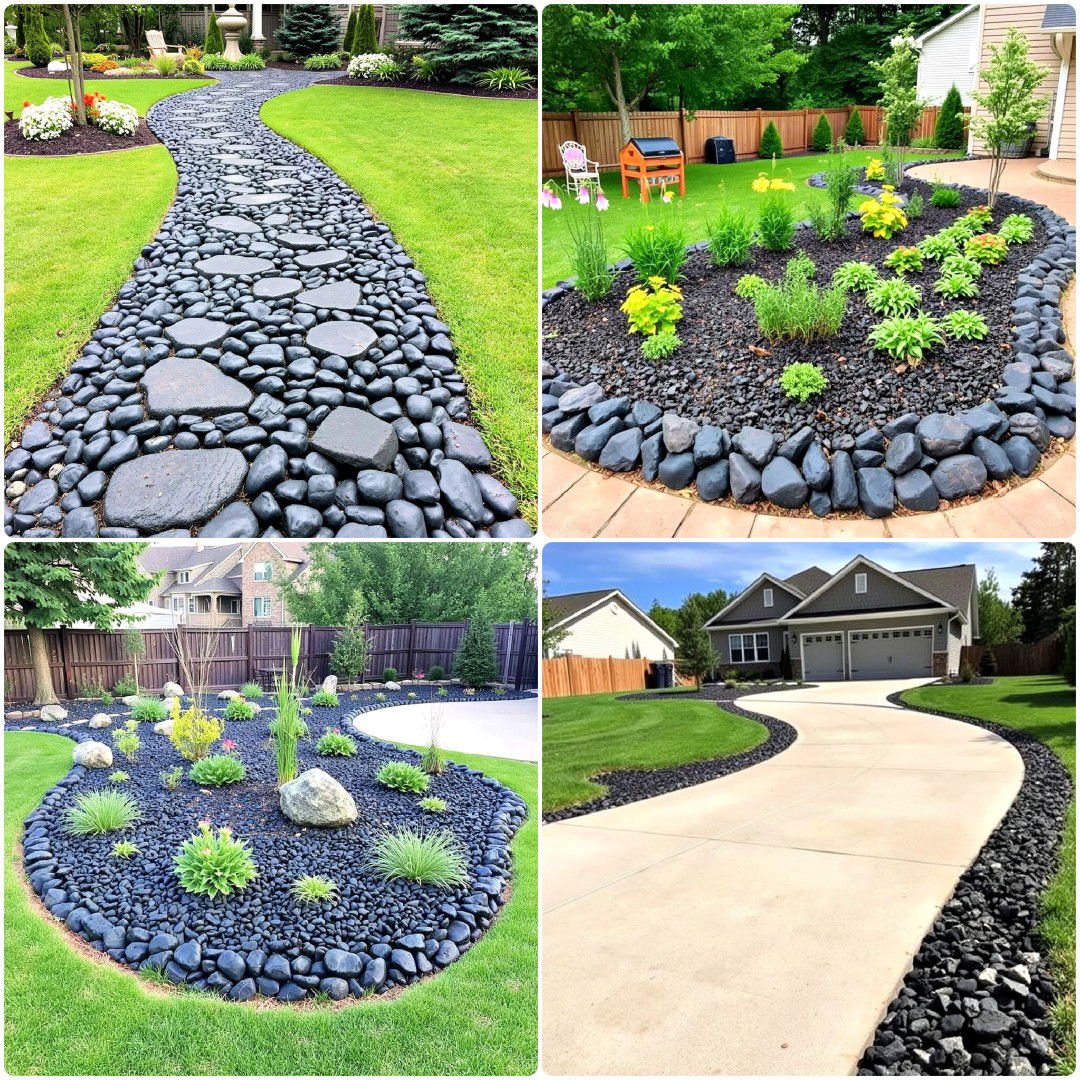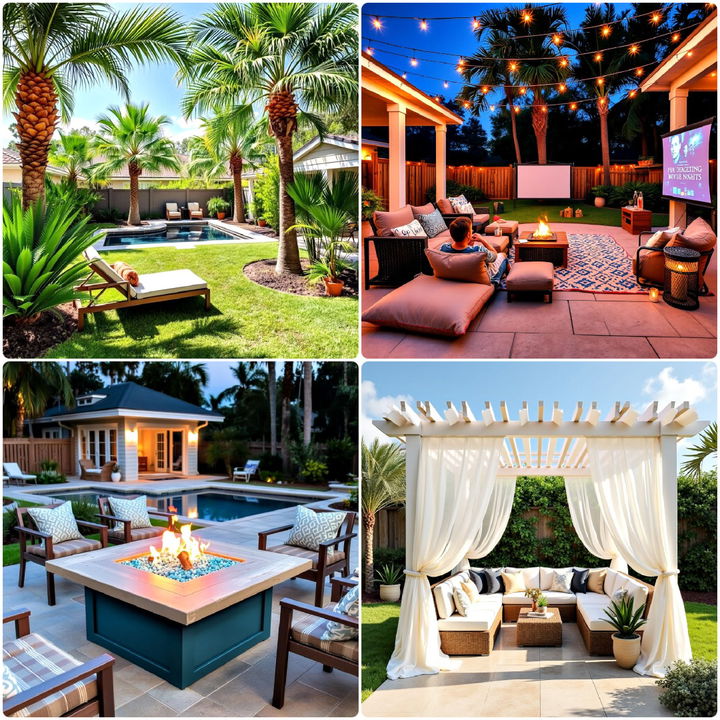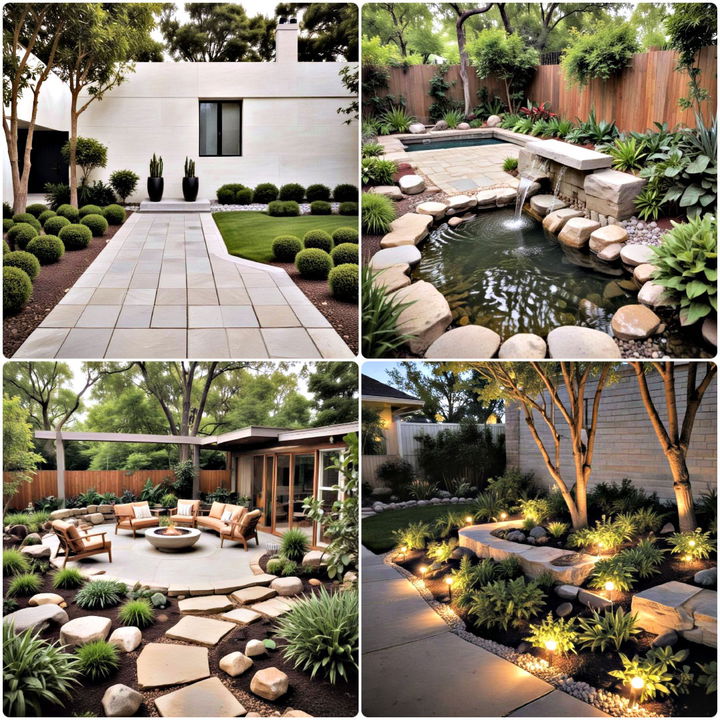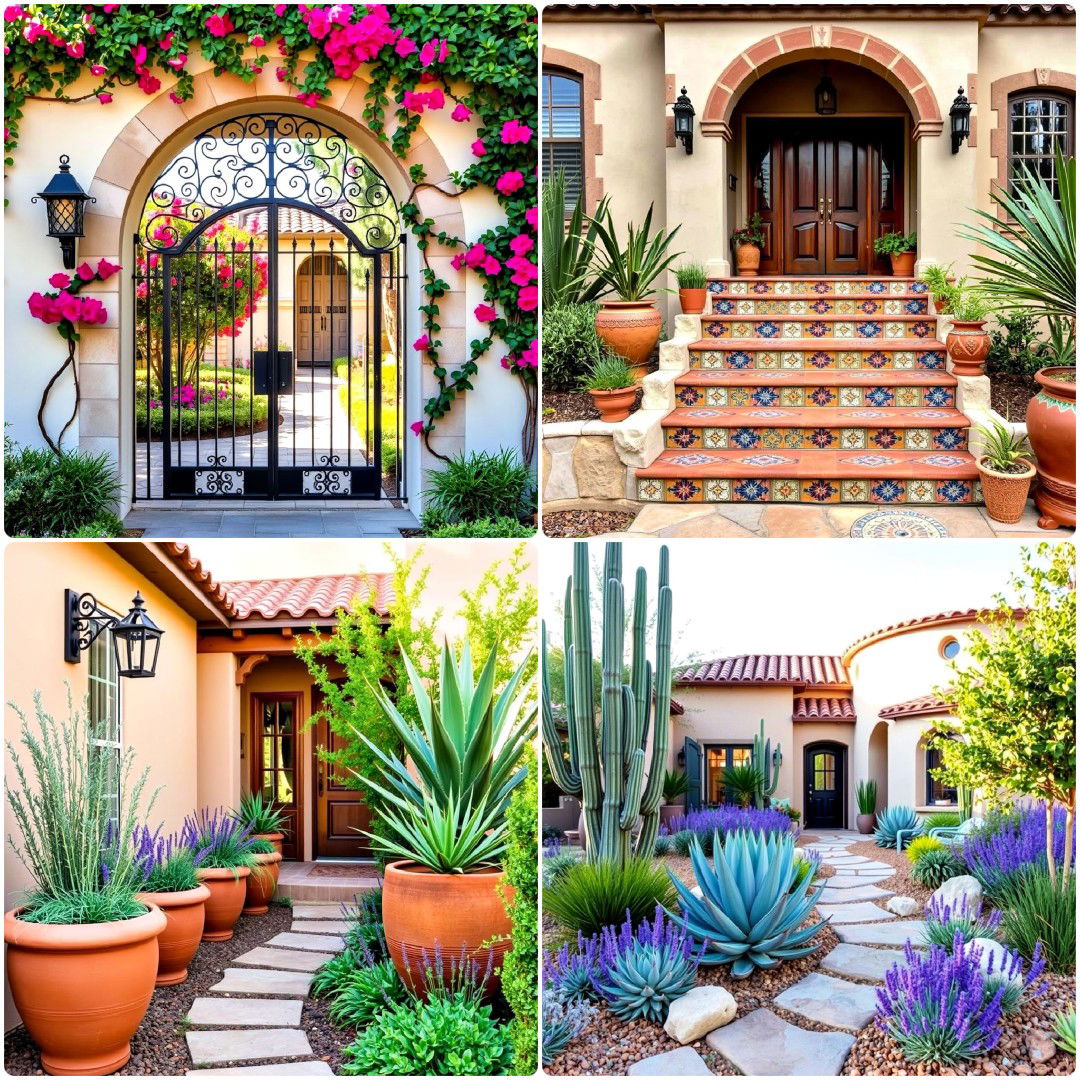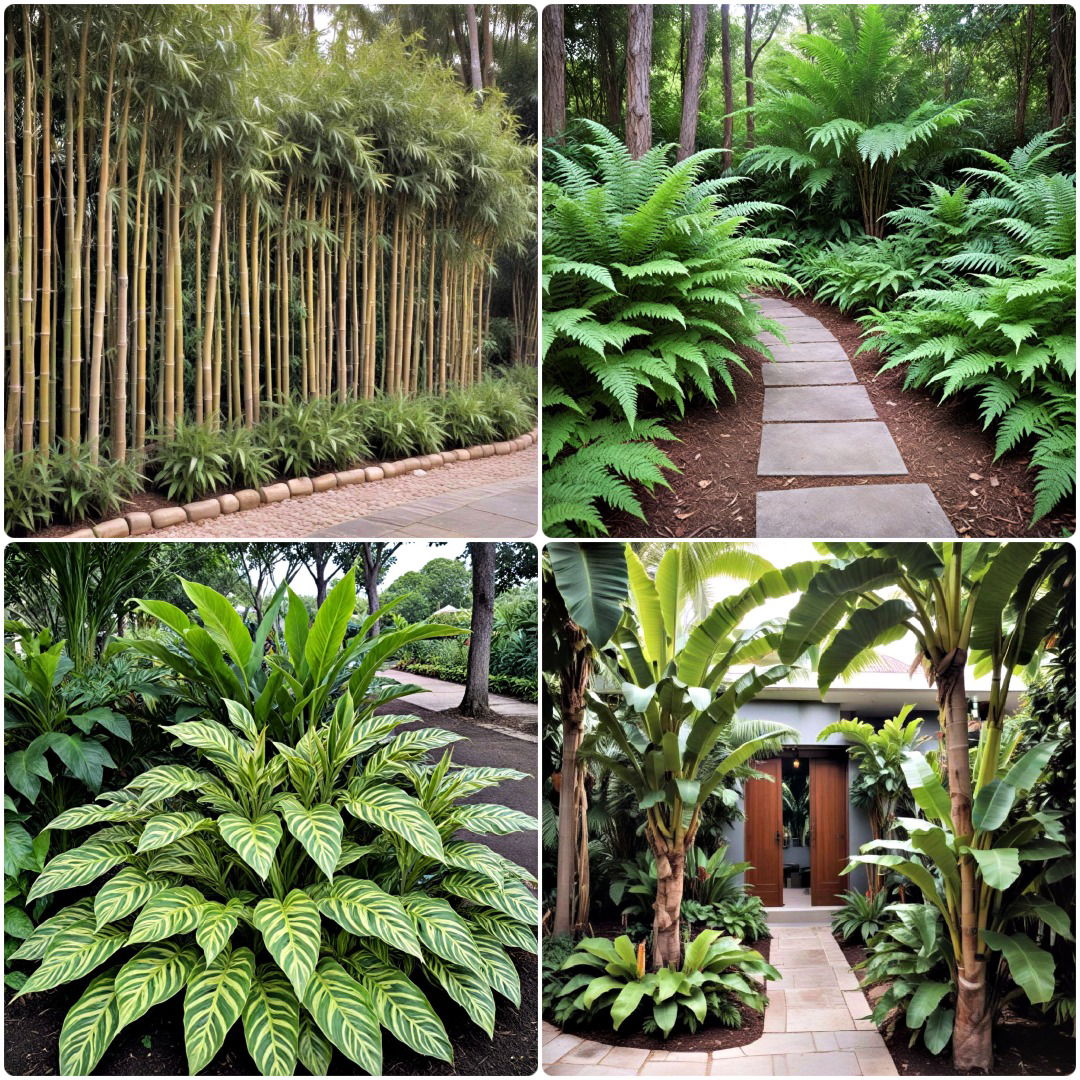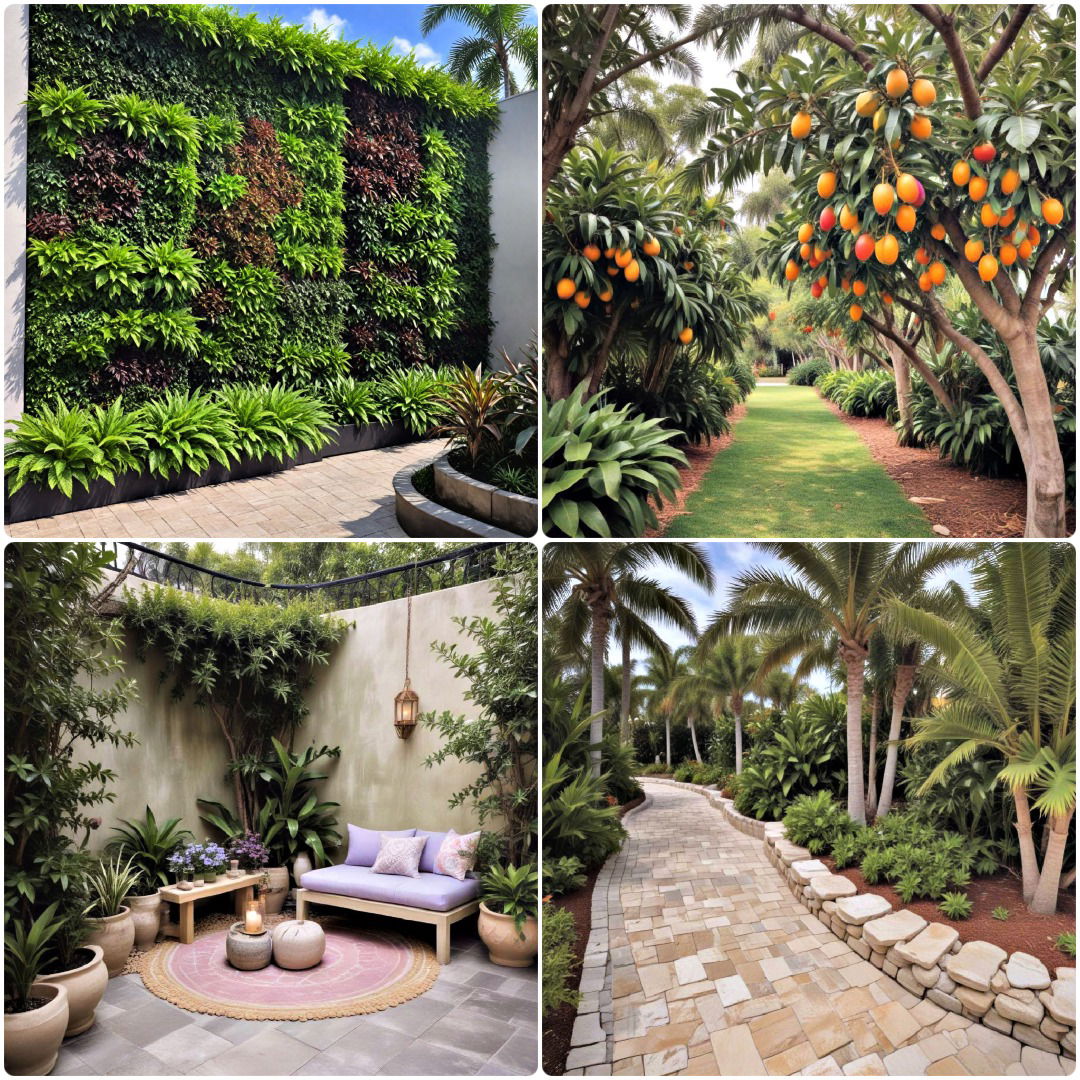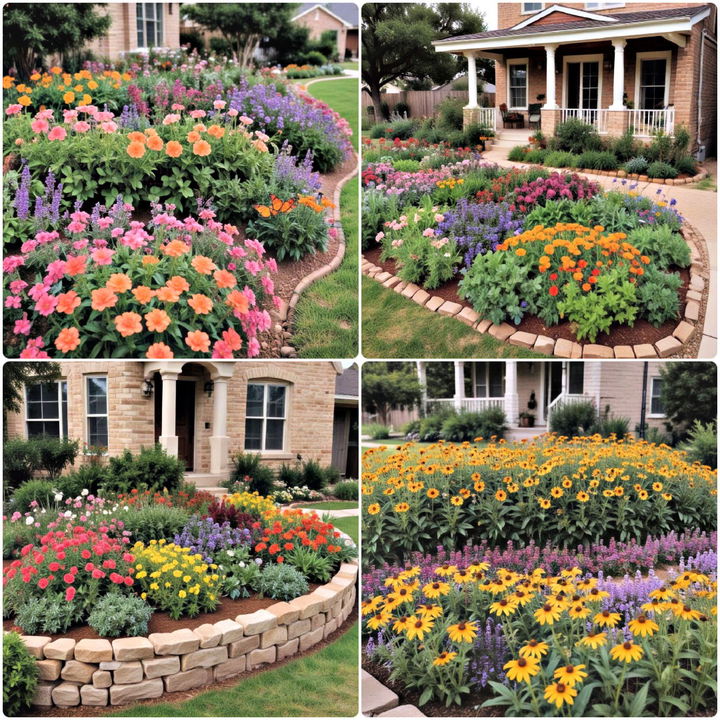The exterior of a home is more than just a first impression—it’s an opportunity to create a dynamic, inviting space that reflects your style while enhancing curb appeal. With the integration of AI in landscape design, homeowners can now seamlessly combine beauty with functionality, achieving outdoor spaces that are both innovative and environmentally responsible. By incorporating intelligent features, from water-saving systems to adaptive plant choices, your outdoor areas can thrive year-round with less effort than ever before.
Imagine stepping into a front yard that feels like an extension of your home’s personality, where every plant, path, and patio is perfectly placed to maximize visual impact. AI tools have revolutionized how we approach landscaping, making it easier to design layouts that suit your specific climate, soil, and aesthetic preferences. Whether you're looking to conserve water, attract local wildlife, or create a tranquil retreat, AI-driven solutions can elevate your design process with precision and creativity.
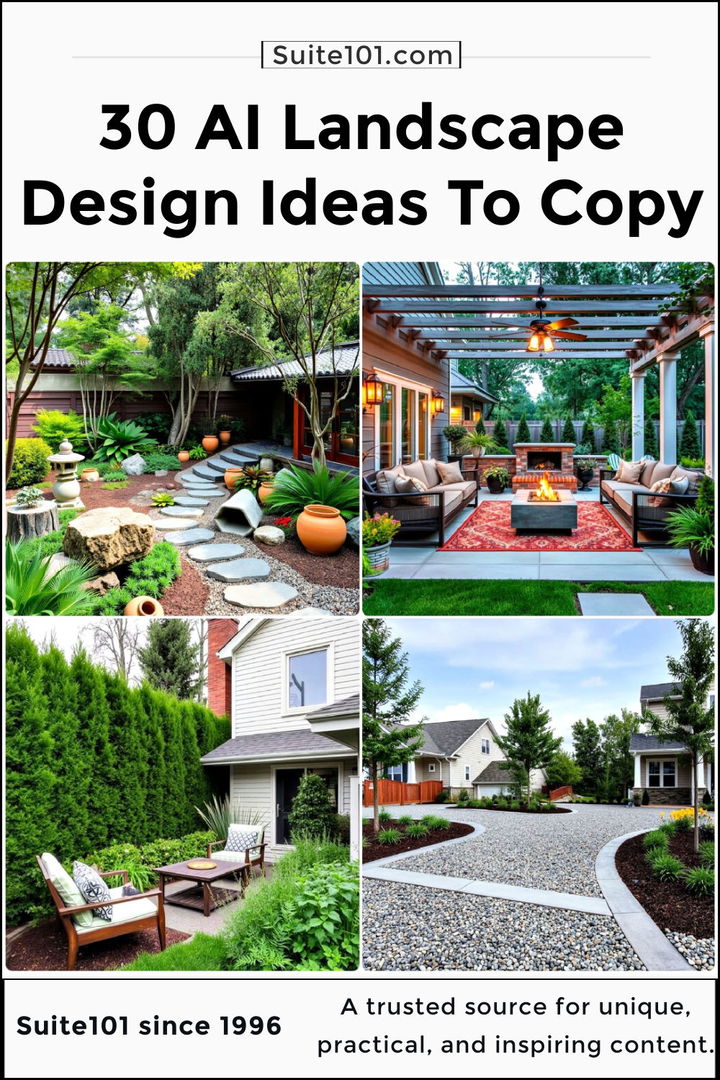
Curb appeal has become more than a selling point; it’s a reflection of sustainable living and thoughtful design. By leveraging technology in landscape planning, homeowners can minimize maintenance and resource use while creating outdoor spaces that remain lush and beautiful. Explore these 30 innovative AI landscape design ideas to transform outdoor spaces efficiently. From eco-friendly materials to smart irrigation systems, AI can take your landscape from average to extraordinary, ensuring that your home stands out in all the right ways.
1. Vertical Garden Walls
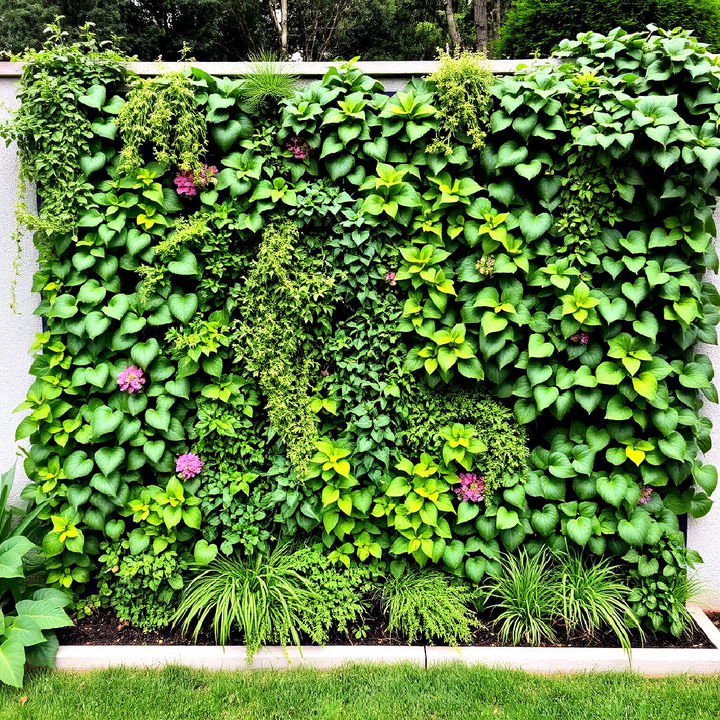
Transform any bare wall into a lush green oasis with vertical garden walls. These living walls not only add visual interest and texture to your landscape but also maximize greenery in compact spaces. Perfect for urban gardens or small backyards, vertical garden walls improve air quality and provide a cooling effect, creating a refreshing environment. They can be customized with various plant types, from flowering vines to herbs, allowing for a unique and personalized touch.
2. Smart Irrigation Systems

Smart irrigation systems revolutionize garden maintenance by automatically adjusting watering schedules based on weather forecasts and soil moisture levels. This eco-friendly solution saves water and ensures your plants receive just the right amount of hydration, promoting healthier growth. With app integration, you can control the system remotely, offering convenience and peace of mind. These systems also help reduce water bills, making them a sustainable and cost-effective choice for any garden.
3. Native Plant Landscaping

Incorporating native plants into your landscape design is an excellent way to promote local biodiversity while reducing maintenance. Native plants are naturally adapted to the local climate, requiring less water, fertilizer, and pesticides. They provide a habitat for local wildlife, supporting pollinators like bees and butterflies. This sustainable landscaping approach creates a vibrant and resilient garden that is both beautiful and environmentally friendly, ensuring year-round color and interest with minimal effort.
4. Outdoor Living Rooms

Discover the future of AI landscape design for stunning outdoor spaces. Outdoor living rooms extend your home’s living space into the garden, creating a perfect area for relaxation and entertaining. Equipped with comfortable seating, weatherproof rugs, and outdoor lighting, these spaces are ideal for enjoying nature without compromising on comfort. Adding elements like fire pits or outdoor kitchens can further enhance functionality, making the area suitable for year-round use. Outdoor living rooms offer a seamless blend of indoor comfort and outdoor ambiance.
5. Permeable Paving Solutions
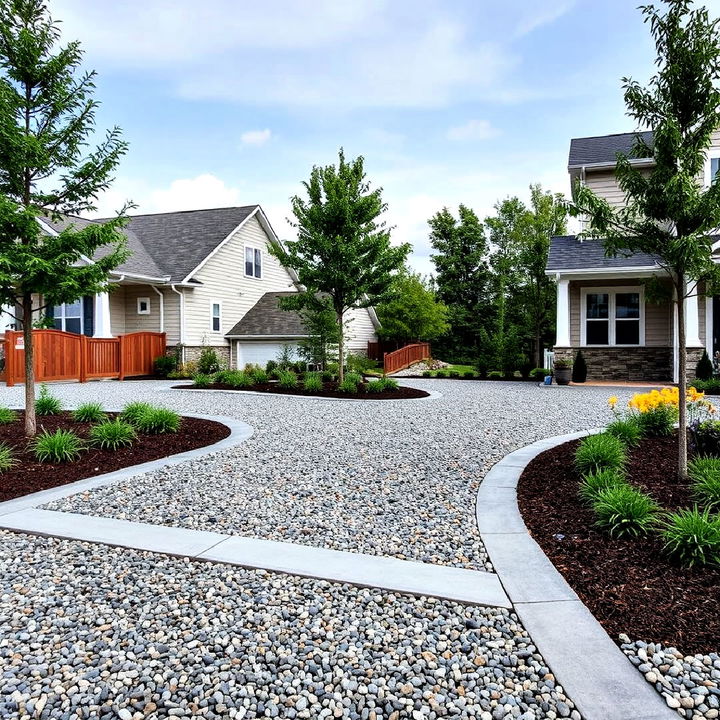
Permeable paving solutions, such as gravel, porous concrete, or permeable pavers, are an environmentally conscious choice that prevents water runoff and promotes groundwater recharge. These surfaces allow rainwater to filter through, reducing erosion and preventing flooding in heavy rain. Permeable pavements are available in various designs and colors, providing aesthetic flexibility while contributing to sustainable urban drainage. Ideal for driveways, walkways, and patios, they combine practicality with ecological benefits.
6. Edible Landscaping
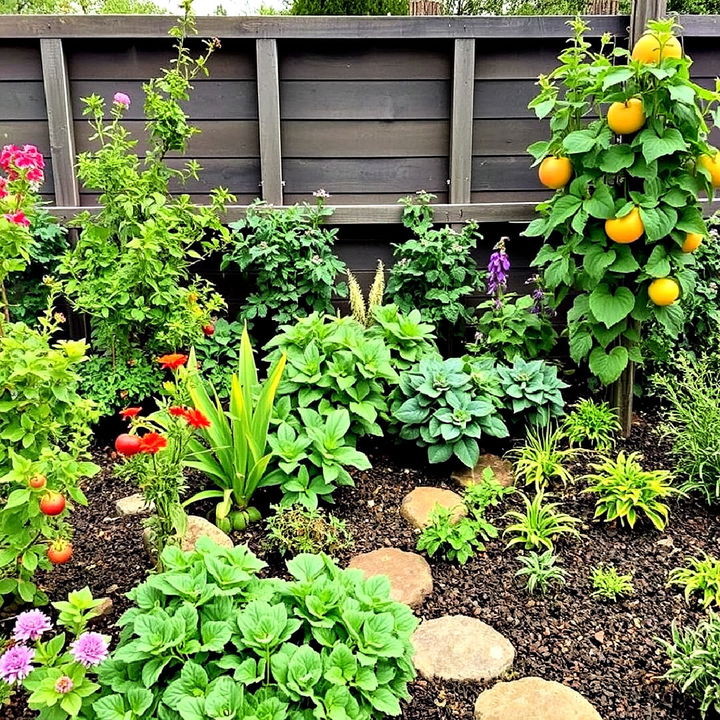
Edible landscaping blends aesthetics with functionality by incorporating fruit trees, vegetable plants, and herbs into your garden design. This approach not only adds beauty through diverse plant textures and colors but also provides fresh produce right at your doorstep. From berry bushes as border plants to vertical herb gardens, edible landscaping makes the most of available space. It promotes a sustainable lifestyle, encourages healthy eating, and adds a unique, personal touch to your outdoor space.
7. Sustainable Rain Gardens
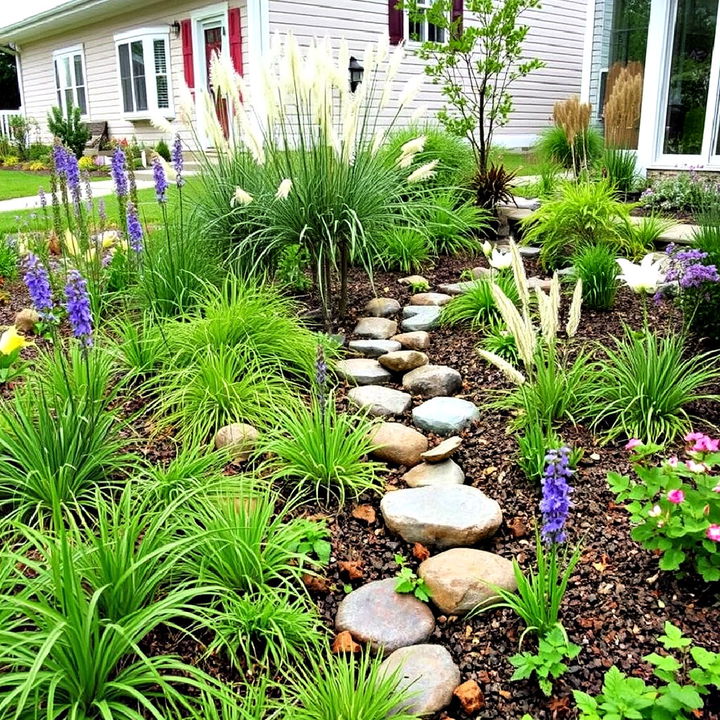
Rain gardens are designed to capture and filter rainwater runoff, turning a functional necessity into a beautiful landscape feature. Planted with native grasses, shrubs, and perennials that tolerate both wet and dry conditions, these gardens reduce water pollution and prevent erosion. Strategically placed, rain gardens can manage excess water in low-lying areas, enhancing the natural beauty while supporting local ecosystems. They offer an eco-friendly way to deal with stormwater management in residential landscapes.
8. Low-Maintenance Ground Covers
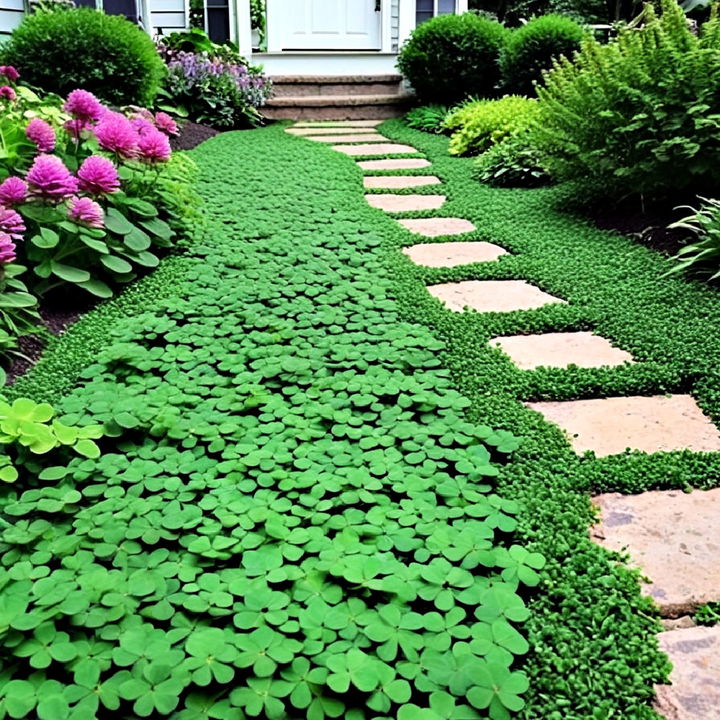
Replace traditional grass lawns with low-maintenance ground covers that offer lush greenery without the need for constant mowing or watering. Options like creeping thyme, clover, and moss are drought-resistant and provide rich textures and colors throughout the year. These plants are ideal for slopes, pathways, and under trees where grass struggles to grow. Ground covers help suppress weeds, reduce soil erosion, and create a seamless, natural look with significantly less upkeep.
9. Zen Garden Spaces
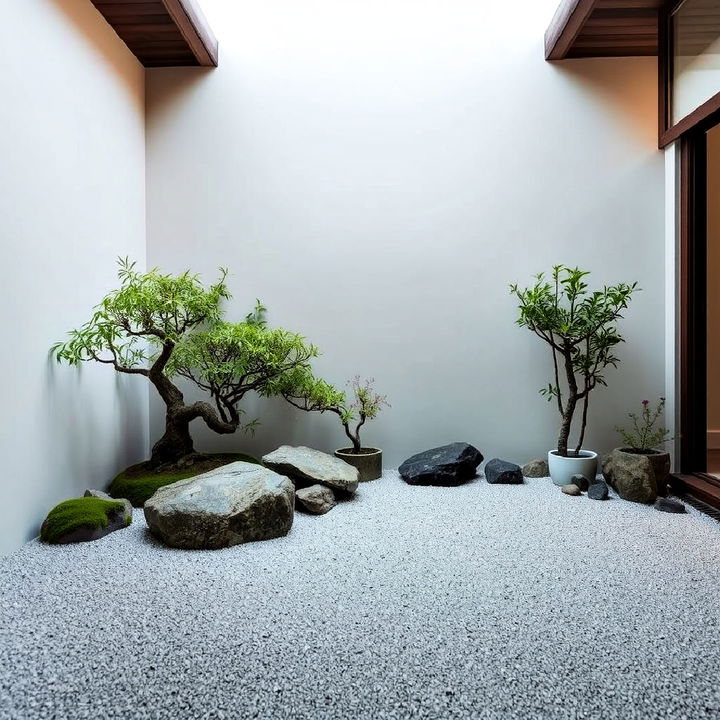
Zen gardens offer a minimalist and calming space for meditation and reflection, incorporating elements like sand, rocks, and carefully placed plants. Designed to promote mindfulness and tranquility, these gardens often feature raked gravel or sand to represent water, while rocks symbolize mountains or islands. Incorporating bonsai trees, bamboo, or moss adds to the serenity and aesthetic of the space. A Zen garden can be a peaceful retreat within your home, perfect for relaxation and stress relief.
10. Wildlife-Friendly Gardens
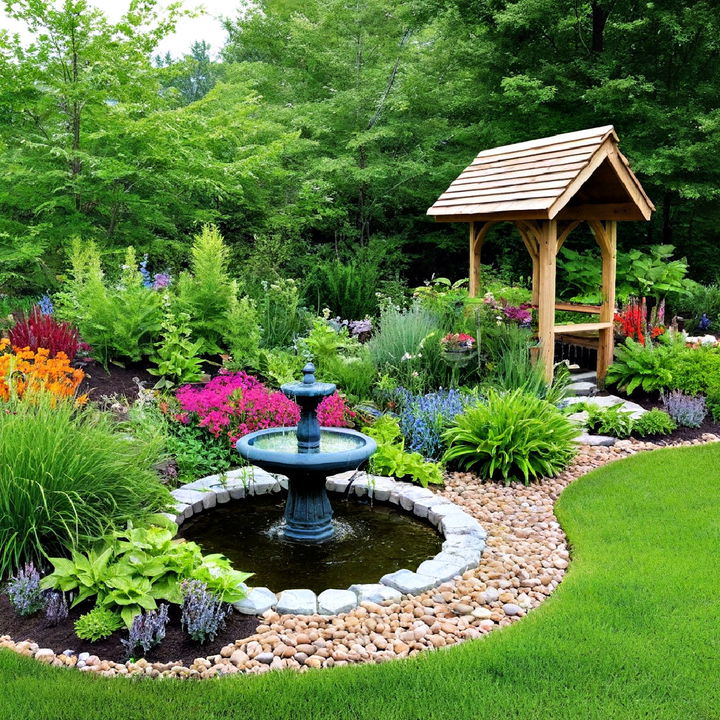
Get free landscape design online tools for your next project. Creating a wildlife-friendly garden involves incorporating plants and features that attract birds, bees, butterflies, and other beneficial wildlife. Use native plants, wildflowers, and shrubs that provide food and shelter for local fauna. Adding birdbaths, feeders, and insect hotels encourages biodiversity and supports local ecosystems. This design not only fosters a thriving natural habitat but also enhances your garden's vibrancy with the sights and sounds of nature, promoting a healthy and sustainable environment.
11. Water Features for Relaxation
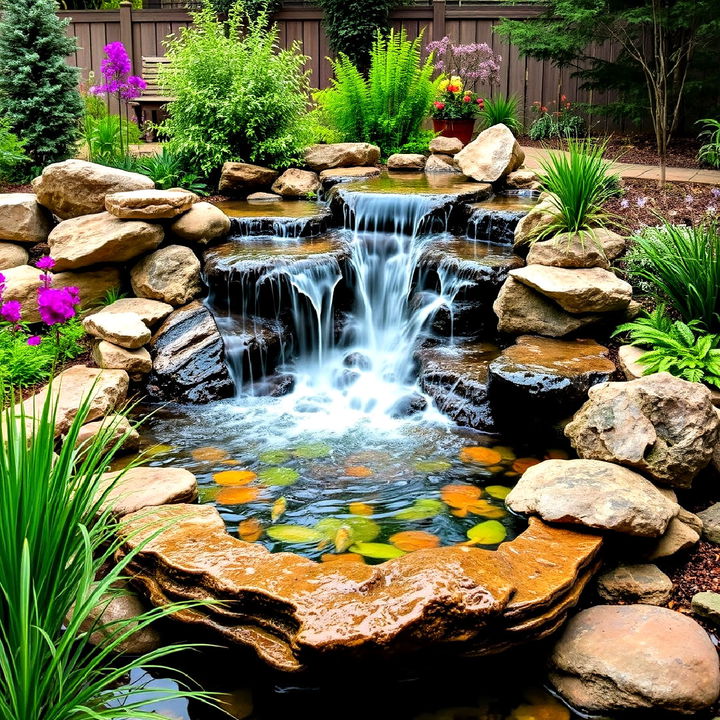
Integrating water features, such as fountains, ponds, or cascading waterfalls, into your landscape adds a soothing auditory element that enhances relaxation. The sound of flowing water creates a calming atmosphere, masking unwanted noise from surrounding areas. Water features can range from small, self-contained fountains to larger ponds with aquatic plants and fish, providing a focal point and adding movement and life to your garden. These features also help attract birds and beneficial insects, contributing to a vibrant ecosystem.
12. Raised Garden Beds
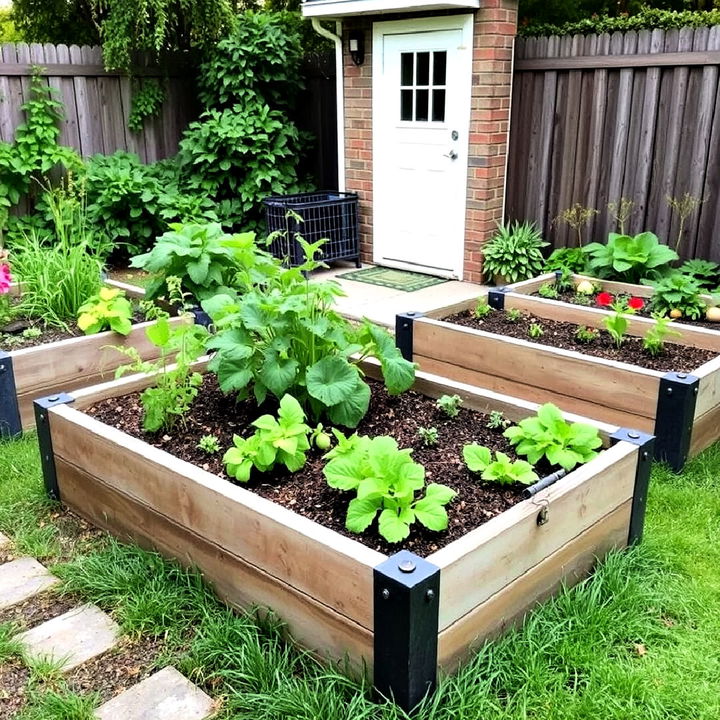
Raised garden beds are a versatile and practical option for planting vegetables, flowers, or herbs, offering better soil control and improved drainage. Elevated beds warm up quicker in the spring and are easier to maintain, especially for those with mobility issues. They also provide an opportunity to create a neat and organized garden layout, which can be customized with various materials like wood, stone, or metal. Raised beds allow for intensive gardening practices, maximizing yield in a compact space.
13. Multi-Season Planting
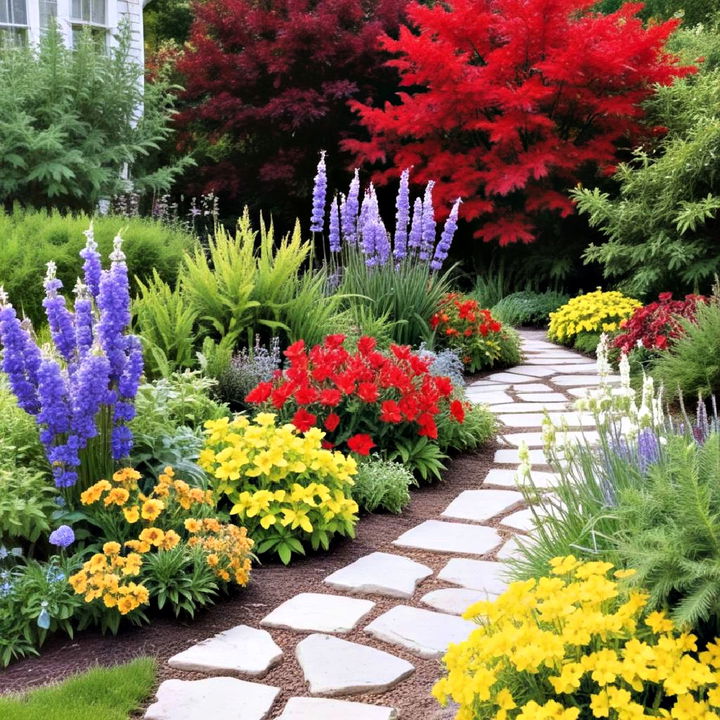
Designing a garden with multi-season planting ensures visual interest throughout the year. By combining perennials, shrubs, and trees that bloom at different times, you create a dynamic landscape that evolves with the seasons. For instance, early-blooming bulbs in spring, vibrant perennials in summer, colorful foliage in fall, and evergreens in winter all contribute to a continuously appealing garden. This approach minimizes dull periods and enhances biodiversity, ensuring a lively and colorful landscape all year round.
14. Outdoor Lighting Accents
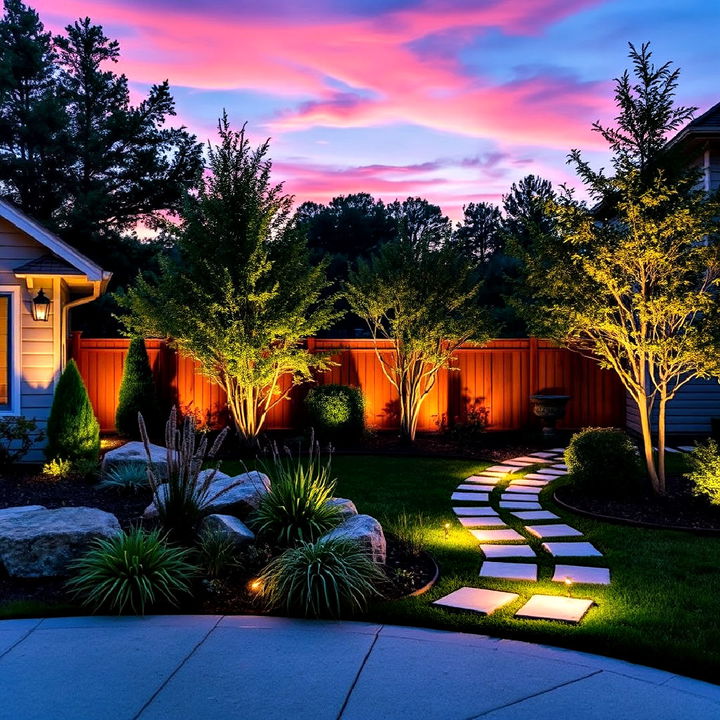
Explore the latest innovations in AI landscape planning and design. Outdoor lighting can dramatically enhance your landscape's appeal after sunset by highlighting key features and creating ambiance. Use strategically placed path lights, spotlights, or string lights to illuminate garden paths, water features, or architectural elements. This not only improves safety and usability of the outdoor space at night but also adds a magical quality, making your garden inviting and warm. Energy-efficient options like solar-powered or LED lights provide eco-friendly and cost-effective solutions.
15. Gravel and Stone Pathways
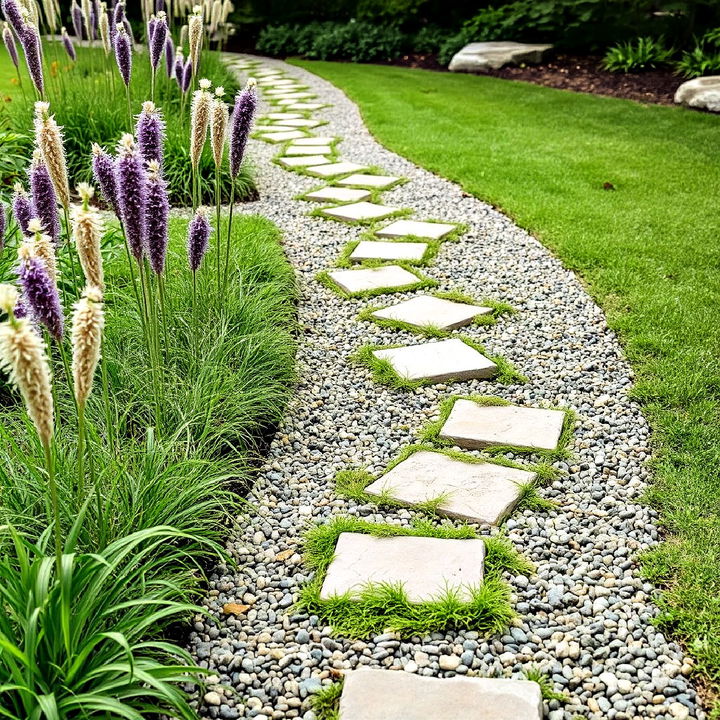
Gravel and stone pathways add texture and structure to your garden, guiding movement and creating a sense of flow. These paths can be designed in various patterns and materials to suit different styles, from rustic to contemporary. Beyond aesthetics, gravel and stone are durable, low-maintenance, and permeable, allowing water to drain through easily, reducing runoff and promoting sustainability. Pathways can also help define garden spaces, making them more accessible and inviting for exploration.
16. Natural Stone Retaining Walls
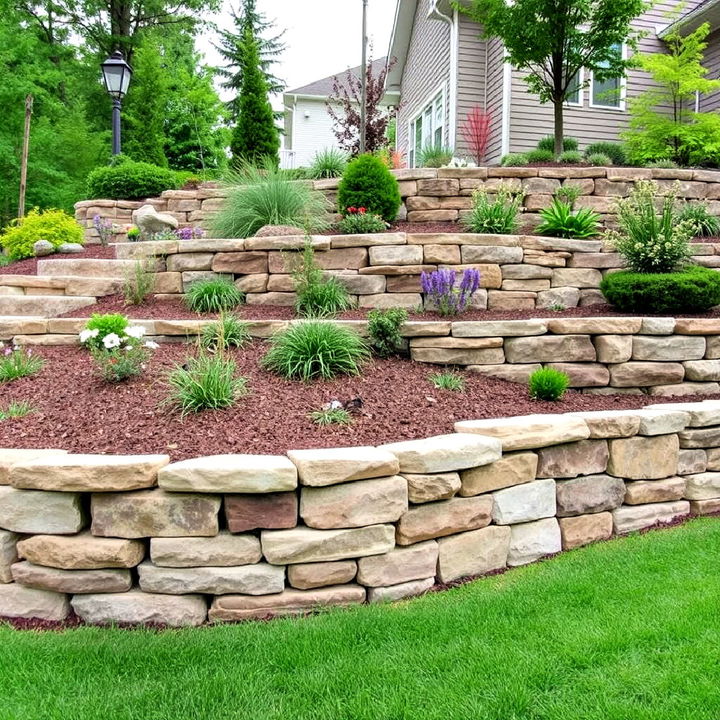
Natural stone retaining walls add both functionality and beauty to sloped or uneven landscapes. These walls help prevent soil erosion, manage water runoff, and create tiered planting areas that maximize usable space. They can be built using a variety of stones like limestone, sandstone, or slate to match your garden’s aesthetic. Retaining walls can also serve as seating areas, garden bed borders, or focal points, providing a rustic charm that blends seamlessly with natural surroundings.
17. Sensory Gardens
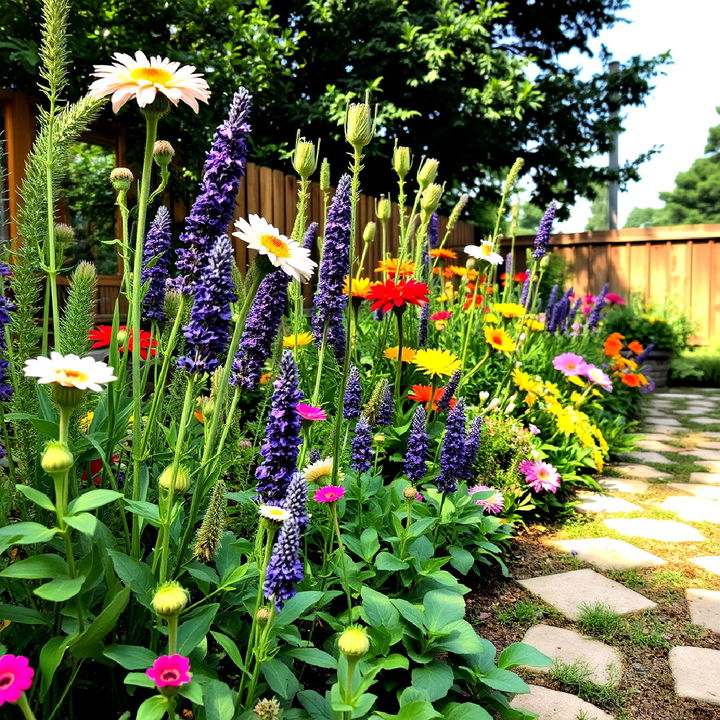
Sensory gardens are designed to stimulate all five senses, creating an immersive and therapeutic experience. Incorporate fragrant flowers like lavender and rosemary, textured plants such as lamb’s ear, and elements like wind chimes or water features for sound. Adding colorful blooms and edible plants enhances the sensory experience. These gardens are particularly beneficial for children and individuals with disabilities, offering a calming and engaging environment that promotes relaxation and mindfulness.
18. Xeriscaping for Water Conservation
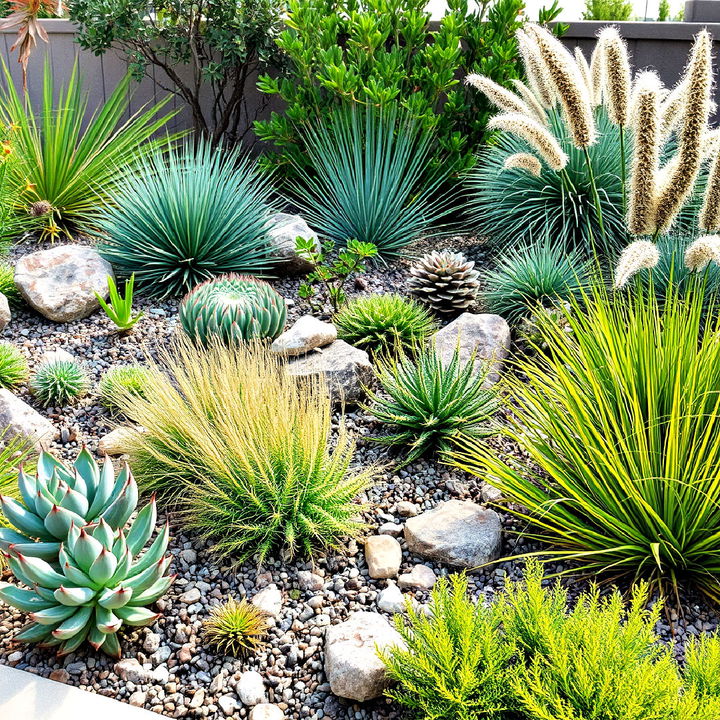
Xeriscaping focuses on using drought-resistant plants and efficient irrigation techniques to create a low-water landscape. This design is ideal for arid climates or areas facing water restrictions, significantly reducing the need for supplemental watering. Succulents, cacti, ornamental grasses, and native plants are commonly used in xeriscaping, providing a diverse range of textures and colors. This sustainable approach not only conserves water but also reduces maintenance and supports local wildlife.
19. Shade Gardens
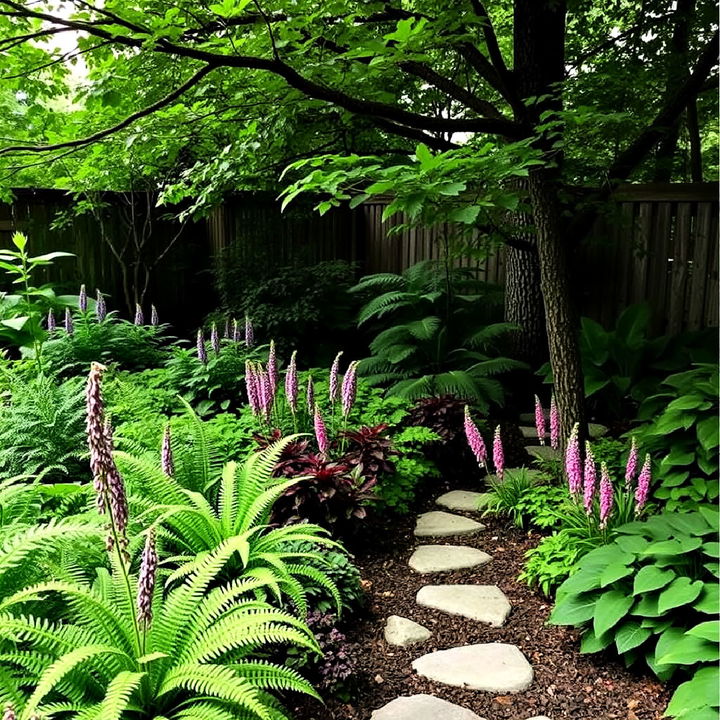
Shade gardens utilize plants that thrive in low-light conditions, perfect for spaces beneath trees or on the shaded side of buildings. Incorporate ferns, hostas, astilbes, and shade-loving perennials to add texture and depth to these areas. Shade gardens can be lush and diverse, offering cool retreats during hot summer months. With careful plant selection and layering, these gardens create a serene, woodland-like atmosphere that brings tranquility to otherwise overlooked corners of your yard.
20. Cottage Garden Style
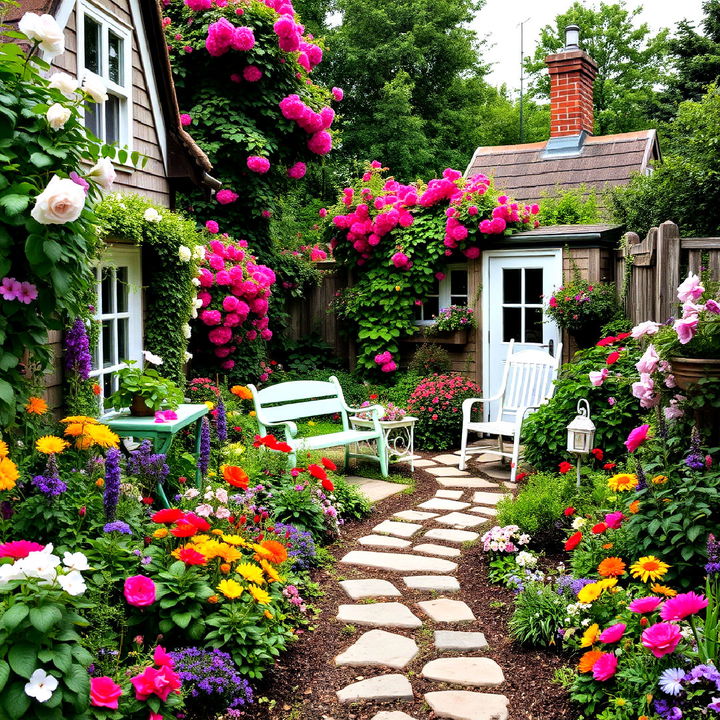
Find inspiring landscape ideas for your yard or garden. Cottage gardens evoke a charming, informal feel with their dense planting of colorful flowers, herbs, and vegetables. This design focuses on creating a natural, overflowing look with a mix of perennials, annuals, and climbing plants like roses and clematis. Winding paths, rustic fences, and quaint garden furniture complement the cottage aesthetic. The result is a romantic and whimsical space that invites exploration and offers a sense of timeless beauty.
21. Fire Pit Gatherings
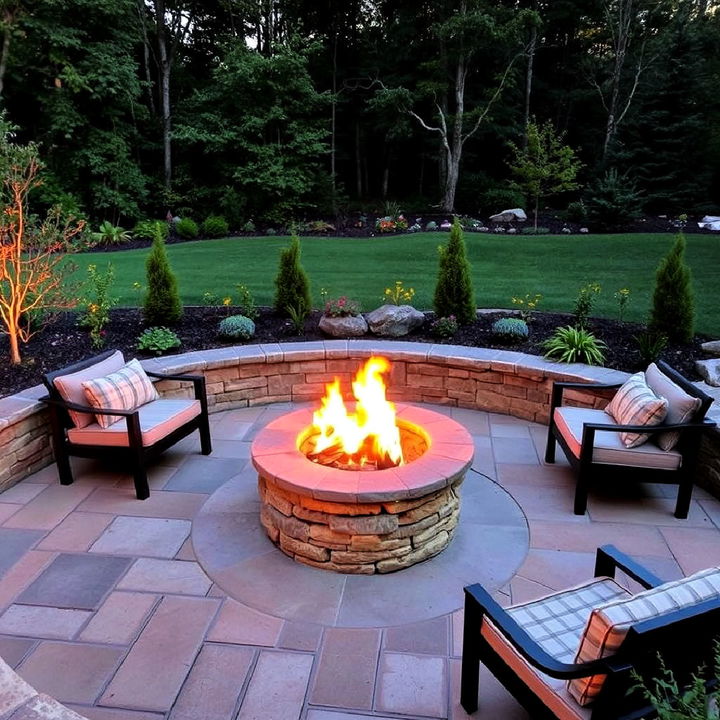
Adding a fire pit to your landscape design creates a focal point for social gatherings and relaxation. Fire pits provide warmth, light, and a cozy ambiance, extending the usability of outdoor spaces into cooler evenings. They can be integrated into patios or surrounded by seating areas to foster conversation. Fire pits come in various styles, from rustic stone to sleek metal designs, allowing you to customize them to suit your garden’s style while enhancing outdoor living.
22. Native Meadow Plantings
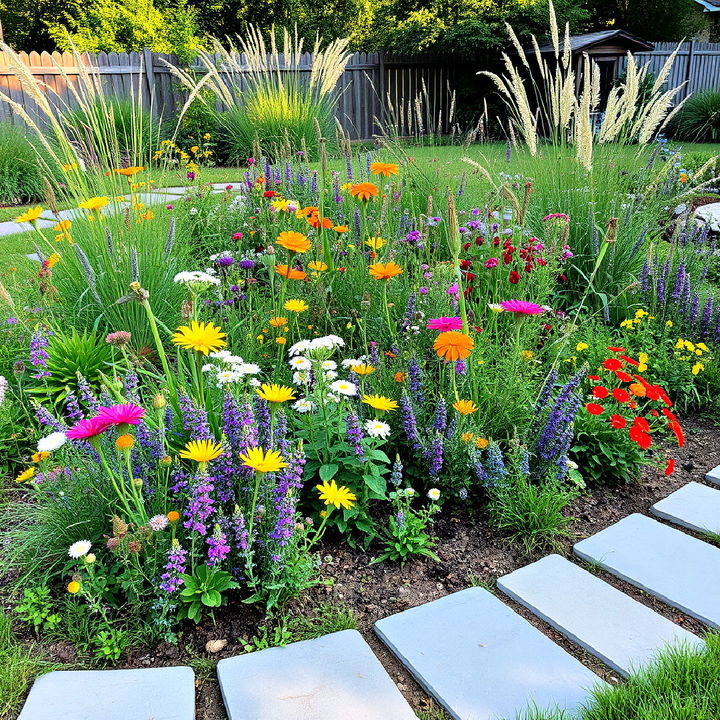
Transform a portion of your landscape into a vibrant native meadow filled with wildflowers, grasses, and pollinator-friendly plants. This low-maintenance approach supports local wildlife and creates a dynamic display of color and texture that changes with the seasons. Native meadows require less water, fertilizers, and mowing compared to traditional lawns, promoting biodiversity and a healthier environment. These areas can also act as natural buffers for stormwater management and soil erosion.
23. Modern Minimalist Gardens
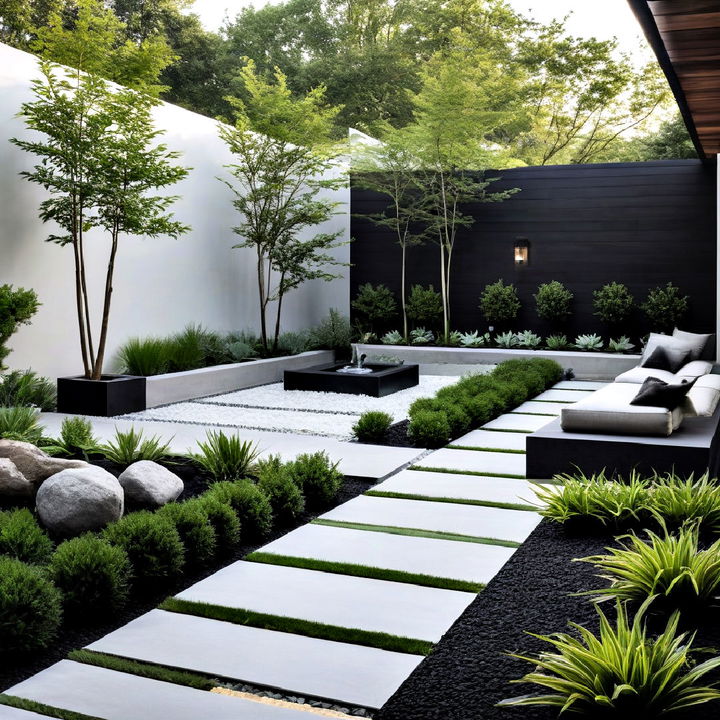
Modern minimalist gardens focus on clean lines, simple plantings, and functional spaces. This style emphasizes quality over quantity, using a restrained palette of materials and plants to create a serene and uncluttered environment. Think of geometric shapes, smooth hardscapes, and monochromatic plantings. Water features, sculptures, and strategic lighting often complement this style, creating a contemporary outdoor space that is both elegant and low-maintenance.
24. Herb Spiral Gardens
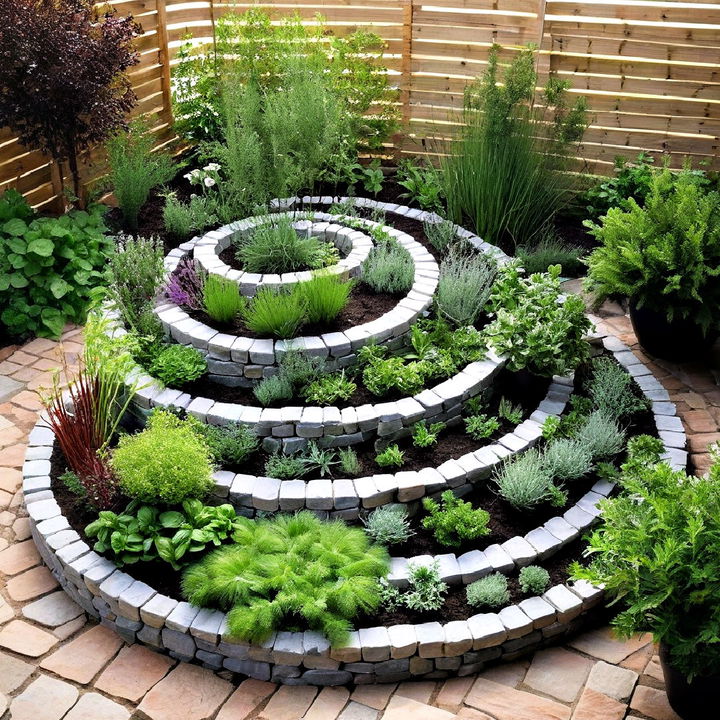
Herb spiral gardens maximize vertical space and create a microclimate that allows different herbs to thrive together. By building a spiral structure with stones or bricks, you can plant herbs with varying water and sunlight needs in a compact space. The top of the spiral is perfect for Mediterranean herbs like rosemary and thyme that prefer dry conditions, while the bottom retains more moisture for herbs like mint and parsley. This design is both practical and visually appealing.
25. Rustic Rock Gardens
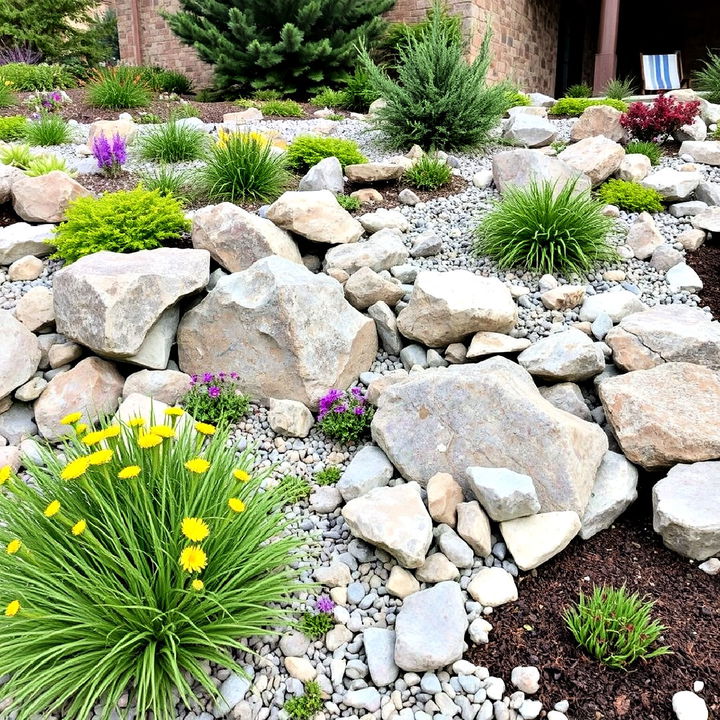
Try easy-to-use online landscape design services for beautiful results. Rock gardens use a mix of rocks, gravel, and low-growing plants to mimic a rugged, alpine landscape. This style is ideal for sunny, well-drained areas and slopes, offering an excellent solution for challenging terrains. Plants like sedums, alpine flowers, and dwarf conifers thrive in rock gardens, providing year-round interest. The contrast between the rocks and plants creates a striking visual effect, adding texture and dimension to your outdoor space.
26. Outdoor Art Installations
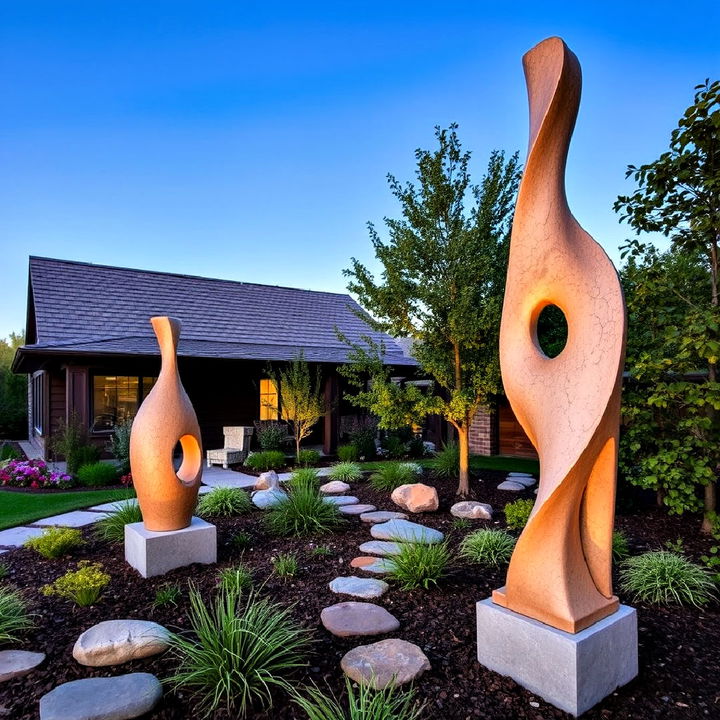
Outdoor art installations, such as sculptures, garden statues, or metalwork, can serve as focal points and add a unique personality to your landscape. These pieces can be subtle or bold, contemporary or classic, depending on your garden’s style. Art installations help create a cohesive theme or a sense of surprise and discovery throughout your garden. Strategically placed artwork enhances the overall aesthetic, making the space more engaging and visually stimulating.
27. Privacy Plantings
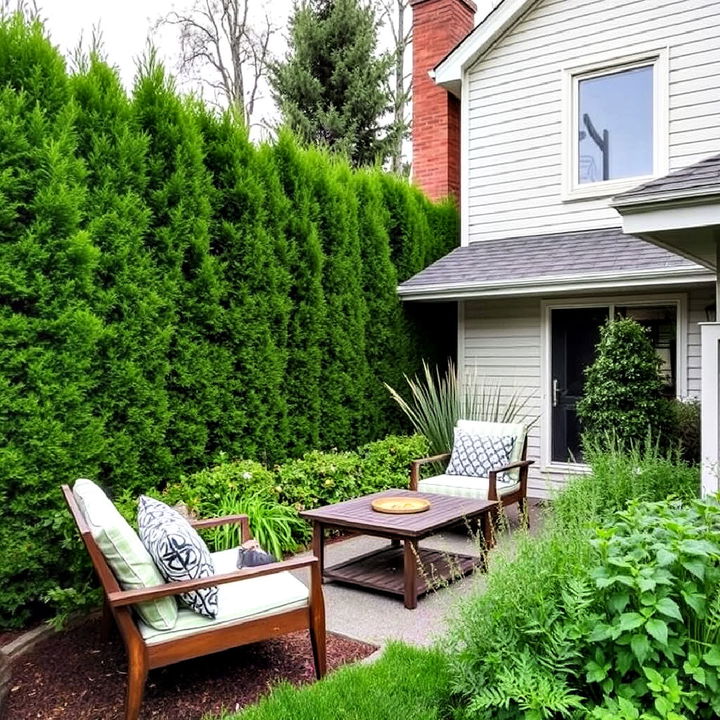
Privacy plantings involve using dense hedges, trees, or tall ornamental grasses to create natural barriers, enhancing seclusion without the need for fences. Evergreen shrubs, bamboo, or fast-growing vines like clematis can form living walls that provide privacy year-round. These plantings not only serve as visual screens but also reduce noise pollution and create windbreaks, adding comfort and security to your outdoor living areas while maintaining a green, natural feel.
28. Gravel Gardens
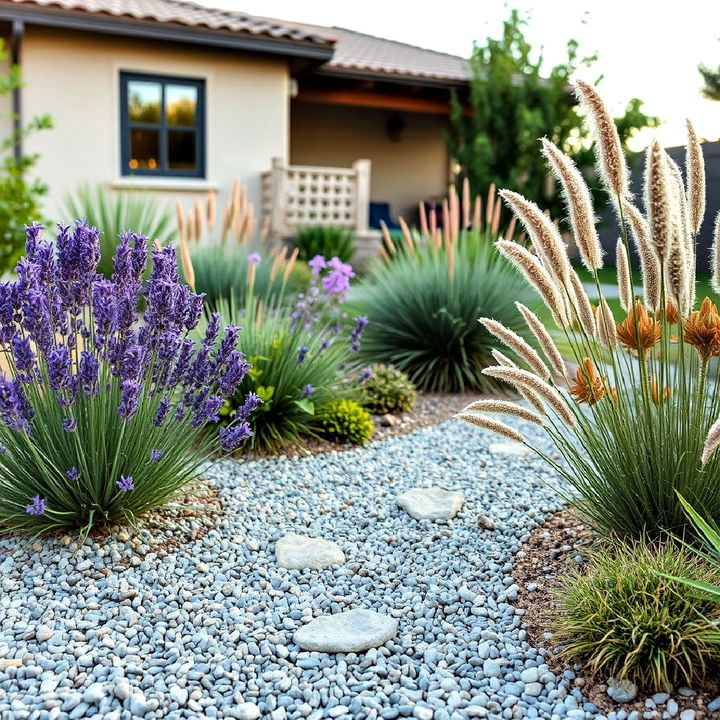
Gravel gardens offer a low-maintenance alternative to traditional lawns and flowerbeds, especially in hot and dry climates. These gardens use gravel as mulch, combined with drought-tolerant plants like lavender, sage, and ornamental grasses. The gravel helps retain moisture, suppress weeds, and create a clean, minimalist look. Gravel gardens are excellent for Mediterranean-style designs and provide a sustainable and stylish solution for water-efficient landscaping.
29. Patio Gardens with Containers

Container gardens allow for flexible and dynamic landscaping, especially on patios or small urban gardens. Use a variety of pots, planters, and containers to create a layered and colorful garden. Containers can be easily moved and rearranged, giving you the freedom to change your garden’s look throughout the seasons. This is also a practical way to grow vegetables, herbs, and flowers in limited spaces, providing convenience and versatility for gardeners of all levels.
30. Themed Gardens (e.g., Japanese, Mediterranean)
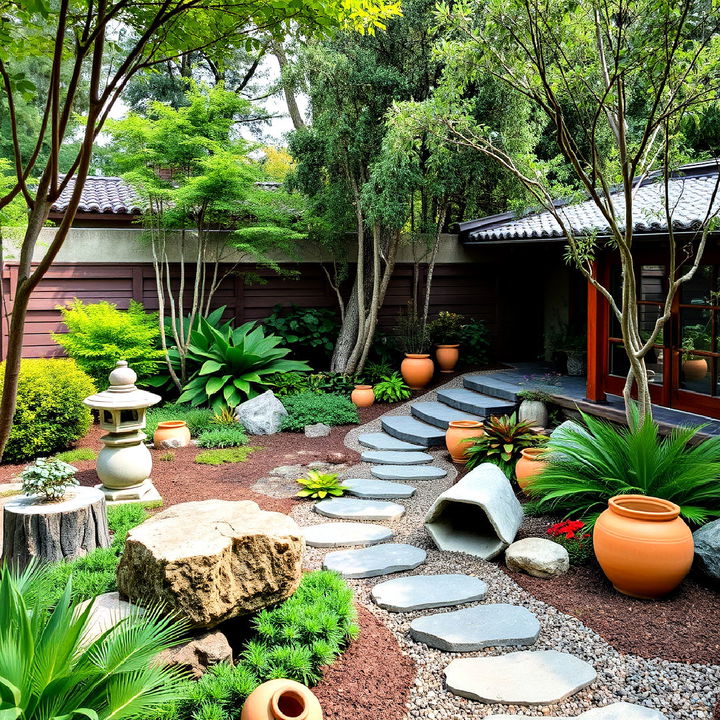
Themed gardens transport you to different parts of the world through carefully chosen plants, materials, and design elements. A Japanese garden may include elements like koi ponds, bamboo, stone lanterns, and maple trees, emphasizing tranquility and natural harmony. Meanwhile, a Mediterranean garden might feature terracotta pots, olive trees, and drought-resistant plants. Themed gardens allow for creative expression and create a unique and immersive outdoor experience tailored to your preferences.
Conclusion:
Boosting curb appeal through AI-driven landscape design brings long-lasting beauty and sustainability to your home’s exterior. By incorporating smart irrigation, native plantings, and low-maintenance solutions, homeowners can reduce upkeep while enhancing the natural aesthetic of their outdoor spaces. Thoughtfully designed features like vertical gardens, permeable paving, and sensory gardens not only elevate the visual charm of your home but also support eco-friendly practices. Embrace these innovations to create a landscape that’s both functional and captivating, ensuring your home shines in every season.
Key Points:
- AI-driven landscape design combines beauty and sustainability, making it easier to create personalized, low-maintenance outdoor spaces.
- Vertical garden walls, smart irrigation, and native plants are ideal solutions for boosting curb appeal while promoting eco-friendly practices.
- Smart irrigation systems conserve water and automate plant care based on real-time conditions.
- Sustainable materials like permeable paving and gravel pathways enhance the look and function of your landscape while reducing environmental impact.
- Edible landscaping, rain gardens, and sensory spaces add unique, engaging features to your yard, making it more than just a visual space.
What to Do Next:
Ready to transform your outdoor space? Start by exploring AI landscape design tools to plan a sustainable, visually stunning yard that boosts curb appeal and minimizes upkeep. Whether you're aiming for smart irrigation or a lush vertical garden, AI can help turn your vision into reality. Dive into these innovative solutions and begin designing a landscape that reflects your style and environmental values today!

